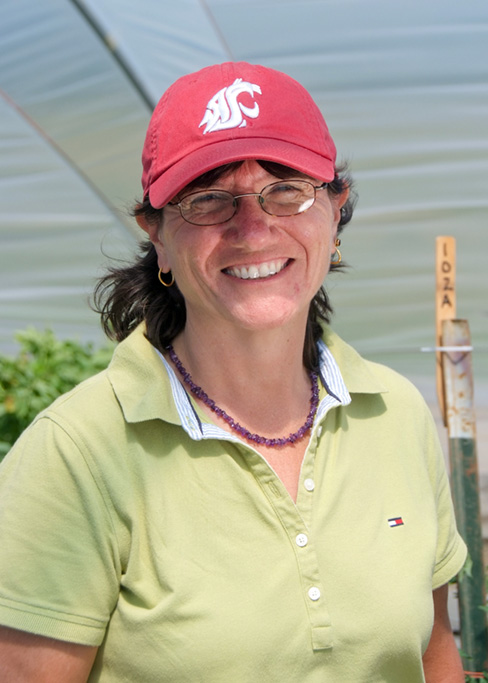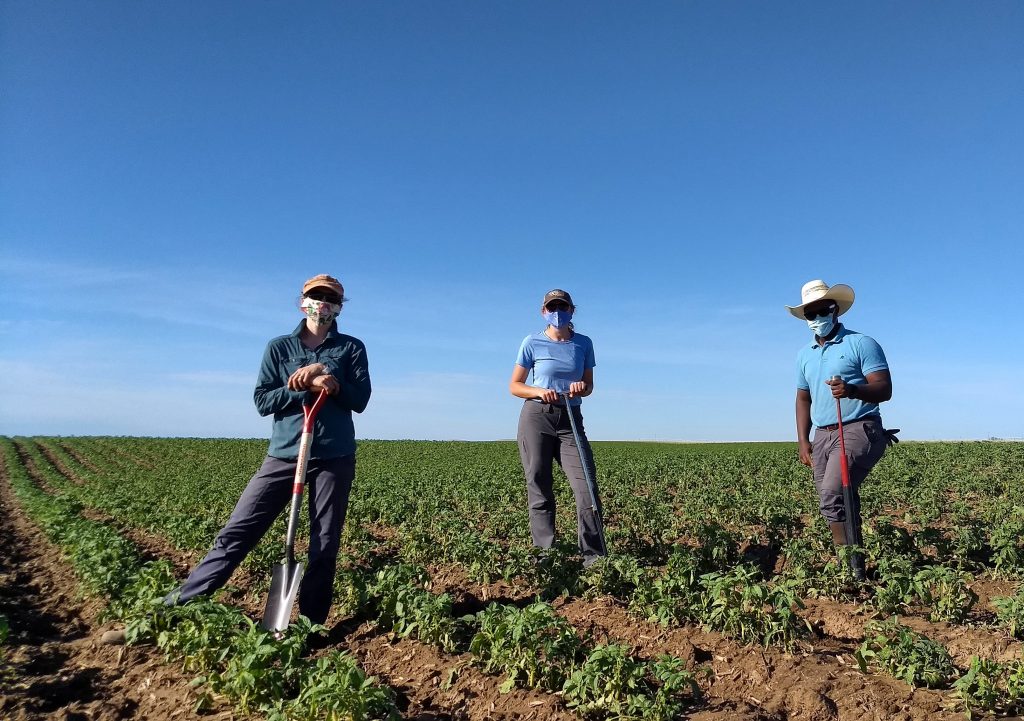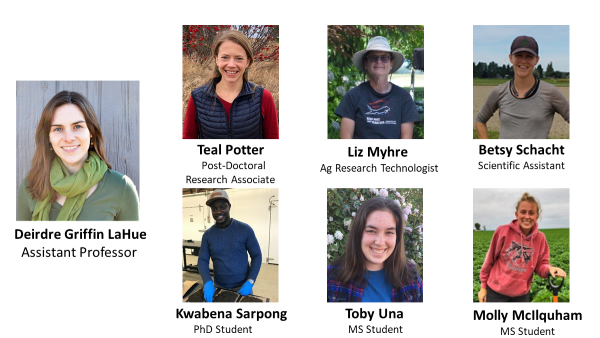Director’s Message
Well what a year it’s been, as I reflect back to the summer, I did not envision that we would still today have restrictions due to Covid-19. The past months have brought strain to our communities and our lives as we all strive to achieve a work-life balance that brings new meaning to this equation. We have remained very active at NWREC as you will see from our Program Updates. Our programs are completely grant funded, and our faculty have carried out key priority research tasks that have enabled us to meet our grant commitments while meeting the requirements for maintaining a safe workplace. For example, to maintain physical distancing for travel, each employee drove separately to research sites throughout the state every other week throughout the summer. We have each made it a priority to keep our graduate students engaged in their programs, so they continue to move forward with their research and academic programs. Faculty and staff have been working from home to minimize the number of people at NWREC, and our Center staff Irene Darnell, Juan Alonzo and Dan Gorton have been sanitizing our common work areas three times per day for the last 10 months to keep us all safe. We have provided leadership to develop Covid-19 response plans that have been adopted by CAHNRS and WSU, and several of our faculty and staff have continued to work while homeschooling their children.
As I reflect back on all we have done the past 6 months that in essence is a job superimposed on top of a full-time job, I am most proud that we have done all of this while maintaining the friendly supportive work environment that NWREC is well known for. This attitude at NWREC is reflective of the can-do attitude and support of all the growers we work with as well as our neighbors and communities. As we all face the economic impact of Covid, we each remain forward-looking as we will get through this too. While NWREC remains closed to the public due to Covid-19, our faculty, staff and students remain on the job. We will continue to share our research with you via on-line seminars and hope you will join us for our Spring Lunch and Learn seminar series, as it is good to see your faces via Zoom and hear your questions. NWREC continues to grow and evolve based on the needs of our agricultural community, and I am pleased to announce we have hired our new Plant Pathologist Dr. Chakradhar Mattupalli. I look forward to seeing all of you at upcoming meetings, and I especially look forward to the new opportunities the next year will provide.

Please Welcome Dr. Chakradhar Mattupalli to NWREC
Chakradhar (Chaks) Mattupalli will lead the new blueberry and potato pathology program at NWREC. After receiving a BS in Agriculture and an MS in Horticulture, Chaks gained experience in agricultural finance while working in the banking industry in India. This position involved daily interactions with growers who provided firsthand experiences of the economic impact of plant diseases. This prompted him to pursue a PhD in plant pathology at the University of Wisconsin-Madison. After graduation, he worked briefly at a start-up agricultural biotech company before taking a postdoctoral position at Noble Research Institute, OK. For the last two years, Chaks has been working as a Research Professor and Extension Specialist at Colorado State University with a focus on potato disease management. Chaks is looking forward to joining NWREC in mid-February and will develop a research and extension program focused on disease management of blueberries and potatoes produced in northwestern Washington.
Program Highlights
Cider Education Program
 Bri Ewing Valliere continues to lead the cider education extension program but relocated to the East Coast the end of 2019. In addition to teaching the WSU cider classes, Bri also teaches for South Puget Sound Community College’s Craft Brewing & Distilling Program online. Additionally, she started her own consulting business, Fermentability Consulting & Education, where she helps craft beverage producers with technical production methods, business planning, and marketing plan development.
Bri Ewing Valliere continues to lead the cider education extension program but relocated to the East Coast the end of 2019. In addition to teaching the WSU cider classes, Bri also teaches for South Puget Sound Community College’s Craft Brewing & Distilling Program online. Additionally, she started her own consulting business, Fermentability Consulting & Education, where she helps craft beverage producers with technical production methods, business planning, and marketing plan development.

Entomology
We tested the efficacy of five products to manage symphylans and collembola in a spinach seed crop in an on-farm trial. In a study of systemic insecticides applied as a soil drench to control cabbage maggot we found residues in cabbage flower pollen and nectar nine months after application.
We used pheromone trapping to understand seasonality of significant small fruit pests Oblique-banded leafroller (OBLR), Orange Tortrix, Winter Moth, Cherry Fruitworm and Eyespotted bud moth, among others. An OBLR resistance bioassay for three insecticides, Diazinon, Imidan and Danitol, provided information on the status of resistance development.
To better understand the seasonality of Blueberry Gall Midge (BGM), a minute fly that kills new leaf buds, and to determine if multiple species are present, we carried out 16 weeks of blueberry tip sampling at four Whatcom County blueberry sites. Dr. Lydia Tymon carried out PCR analyses of BGM larvae from the > 4,000 larvae collected, and identified three different genetic clades of BGM in western Washington blueberry, one of which is unique to NW Washington.
Brown marmorated stink bug (BMSB) is a pest of many small fruit and vegetable crops and we assessed the current status of season-long populations in Whatcom and Skagit Counties. Sentinel egg masses of BMSB were deployed in Skagit County to detect presence of Trissolcus japonicus, a parasitoid of BMSB, followed by releases of over 1,400 T. japonicus to help in the establishment of the parasitoid wasp, for long term management of BMSB in western Washington.
Newly identified parasitoids of spotted wing drosophila (SWD) were surveyed along the Washington/BC border.
In a collaborative Caneberry Degradation project with Oregon we will provide NW growers with guidance on timing of harvest and shipments of red raspberry and blackberry exports to meet target market maximum residue levels (MRLs).
To mitigate thrips as a trade barrier for Alaska grown peonies, we collected over 1,300 adult and larval thrips from more than 1,500 dissected peony buds from 27 farms and over 50 peony cultivars. Thrips were identified using both taxonomic and molecular methods (by Dr. Lydia Tymon), and we are creating an interactive key.
Efficacy of organic and conventional insecticides were tested against wireworm in two field trials. We also assessed the potential of wheat as a wireworm attractant with and without a bait, and we surveyed wireworm species.
Graduate Students

Alec Blume, MSAg: Determine the efficacy of biological control of the rice root aphid, Rhopalosiphum rufiabdominale, a cannabis pest. Alec joined us during Summer 2020.
Plant Breeding – Breadlab
In 2020 the lab will be releasing five new wheat varieties:
Eileen. Hard/soft spring based on a brightly colored composite bulk of purple and merlot colors. Eileen is named in honor of the late Eileen Anna Kisler, grandmother to our longtime collaborator Keith Kisler of Finnriver Grain. Eileen was a prolific and excellent baker and a force on their family wheat farm near Warden, Washington.
Doris. Tall awnless hard red winter selected from our modern land race Skagit 1109 and named in honor of the late Doris Grant, food activist, whole-wheat-only (and always) baker, and leader in regenerative/organic before anyone thought it needed a name. Doris fought the big food industry for eight decades.
Wolfe. Composite of 18 crosses and an incredibly diverse hard red winter that will change each year and become of a place. Wolfe is named in honor of the late Dr. Martin Wolfe who, with the YQ population, showed us all that yield, quality, and diversity is not only possible but required in a changing climate and world.
Ruth. Hard red spring named in honor of the late Ruth Christensen, who kept the books for her family farm in Yamhill Valley Oregon, a farm that had been in her family since 1918. Ruth was the sister-in-law of Merrill Lewis, retired English Professor and casual wheat breeder. Merrill bred this wheat as well as the Edison variety. He chose to name this wheat after Ruth because even in the rockiest of times she was always the incredibly fair voice of reason.
LeSourd. Hard red winter named in honor of John LeSourd, great-great-grandfather of longtime collaborator Clark Bishop, whose family has farmed Ebey Road Farm in Island County since 1885. This area has held numerous national and international records for wheat yields and continues as one of the most prolific and beautiful places to grow wheat on the planet.
The Breadlab Collective, formed in 2020 has over 50 members in 24 states and four countries, is a group of bakers, millers, plant breeders, teachers and students who have joined together to create an affordable, approachable, accessible whole wheat sandwich loaf. The loaf contains no more than seven ingredients, contains no non-food, is at least 60% whole wheat and is priced under $6. WSU Breadlab is collaborating with Flathead Valley Community College, Yale University, University of Kentucky, Tufts University, and Chatham University on wheat, barley, and rye breeding trials as well as community outreach to make nutritious food more affordable, approachable, and accessible.
Staff and students of the Breadlab work with instructors from the King Arthur Baking School to provide whole grain bread to our community. Together we organize “Bake for Good” events that are low-cost or free to the public; students gain hands-on baking experience, and the products are donated to our local food banks. Since March 2020, we have donated over 6,000 loaves of bread to our local school district, shelter, and two food banks. It has been a wonderful way to combine utilizing the grains we are breeding, baking nutritious bread, and staying connected to our community.
Graduate Students
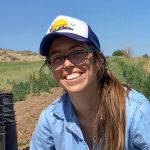
Merri Metcalfe, PhD: Breeding wheat that has a higher level of fiber with a focus on making nutritious food more available within our communities.
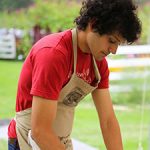
Robin Morgan, PhD: Perennial and colored wheat and the intersections between breeding and baking.

Laura Valli, PhD: Breeding and baking with rye and working with local farmers and bakers to increase acreage and demand for rye.

Louis Prager, PhD: Breeding zero-GN (glycosidic nitrile) colored barley for malting purposes with a focus on varieties intended for organic agriculture.
New Grants
Bullitt Foundation, Sustainable Path Foundation, Skagit Community Foundation, Patagonia Environmental Grants Program, Northwest Agriculture Research Foundation, and United Natural Foods Inc.
Small Fruit Horticulture
Adoption of plastic mulch continues among Washington red raspberry growers. Plastic mulch is being used to promote establishment, increase yields in spring-plantings, and provide in-row weed management. These attributes are particularly beneficial for plantings that use tissue-culture transplants, which are also becoming increasingly used among growers.
Results from 2020 harvest trials continue to show the modified over-the-row harvester manufactured by Oxbo and designed to harvest fresh market blueberry can harvest berries with fruit quality greater than conventional machine harvest although less than hand harvest. Several growers have purchased the harvester, and harvester modification and testing continue. We continue our outreach on factors that must be optimized for successful machine harvest of high-quality fresh market blueberries. These machines can help reduce the challenges associated with the increasing costs and decreasing availability of agricultural labor.
We will be conducting additional pollination research in blueberry systems for the next four years thanks to a multi-institutional SCRI grant. This project has many components, but the overall goal of the research will be to create data-driven decision aid tools to help growers make pollination decisions.
Updated website on plastic mulches.
Graduate Students

Huan Zhang, PhD: Application of polyethylene and biodegradable plastic mulches in caneberry production systems. Graduated in summer and started working at Costa in China as Plant and Disease Manager.

Qianwen Lu, PhD: Impact of alternative fertilizers and bioinoculants on red raspberry and soil health. Passed her PhD qualifying exams November.

Yixin Cai, MS: Machine harvesting for fresh market blueberry. Successfully defended her thesis and will graduate December. Next step is starting PhD program.

Brenda Madrid, MS: Enhancing degradation of biodegradable plastic mulches and end-of-life management of agricultural plastics. Led authorship of a factsheet and produced a video describing how to measure degradation of biodegradable mulches. Contributed to response to the National Organic Standards Board about biodegradable mulches in US organic systems.

May Wang, MS: Novel strawberry systems, botrytis, and splash dispersal patterns of mulches.
Awards
Qianwen Lu won 1st place in the American Society for Horticulture Science graduate student poster competition.
New Grants
Improving pollination in blueberry systems. Michigan State University, University of Florida, Oregon State University and Washington State University. USDA Specialty Crop Block Grant.
Soil Health
The Soil Health Team was busy this summer as we sampled soil on over 110 farmer’s fields across four cropping systems and eight counties as part of a USDA Specialty Crop Block Grant led by Dr. Griffin LaHue. Results from this project will help to adapt soil health assessment frameworks to WA’s soils and systems and to evaluate how soil management affects system health and productivity across major specialty crops.
We continued our investigation of the suitability of winter cover crops in western WA potato and vegetable seed systems. Our goal is to improve physical and biological soil health while not increasing soilborne pests and diseases.
Graduate students
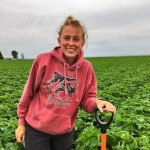
Molly Mcilquham, MS: Evaluating soil health indicators and improved soil management in wine grape systems. Molly joined the Soil Health program in June 2020 and is from Chippewa Falls, WI.
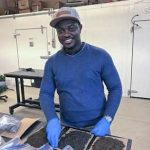
Kwabena (Kobby) Sarpong, PhD: Assessing soil health and the relevancy of soil health indicators across major specialty crops in Washington State. Kobby is from Ghana and joined us in January 2020 from New Mexico State University.

Toby Una, MS: Investigating the benefits and trade-offs of winter cover crops in western Washington’s potato and vegetable seed systems. Toby began in Fall 2019 and is from Enumclaw, WA.
New Grants
Enhancing Human Health and Nutrition from Soil to Society using Quinoa as a Model Crop. Kevin Murphy (PI), Deirdre Griffin LaHue, Girish Ganjyal, Franck Carbonero. Foundation for Food and Agriculture Research (FFAR) $2 million.
Soils & Water
Our program continues to work to provide growers and stakeholders with the information and tools needed to effectively manage soil moisture and soil fertility for improved productivity and stewardship of natural resources. Ongoing work is exploring soil moisture management for spinach seed production and the interaction of irrigation practices with plant diseases in both spinach seed and onion bulb crops.
Pilot work with farmer-led irrigation experimentation has shown promise and we plan to expand this research in the coming year (let us know if you are interested!).
We were successful in securing funding to determine the role of soil organic matter in increasing plant available water in compaction-prone systems, a critical aspect of soil health in northwestern Washington.
Our work in nutrient management and soil fertility is also beginning to generate promising results, with information emerging that may help blueberry growers better tailor fertilizer programs to expected nitrogen release from soil organic matter and onion growers avoid losses due to bacterial rots. We look forward to continuing to engage with the agricultural community and other stakeholders in the new year.
Graduate Students

Cheyenne Sloan, MS: Cheyenne started in Fall 2019 after graduating from Michigan State University. Her work seeks to determine how nitrogen mineralization from soil organic matter influences nitrogen fertilizer requirements in highbush blueberry systems.

Tessa Belo, MS: Tessa joined the program in Fall 2020 to explore the impact of irrigation and fertilization practices on bacterial diseases in onion bulb crops. Prior to starting at WSU, Tessa worked as researcher and laboratory technician at the University of Minnesota.
Vegetable Horticulture
We are developing a more efficient method to graft watermelon, so that grafted plants are more affordable. Sucrose and antitranspirant applied to rootstock seedlings before grafting increased the survival of splice-grafted watermelon, where both the cotyledons are removed from the rootstock. Splice-grafted watermelon performed similarly to one-cotyledon grafted and nongrafted watermelon plants in field production. Grafting watermelon with disease resistant rootstocks can reduce verticillium wilt severity and increase fruit yield, and 5 Verticillium dahliae colony forming units per gram of soil appears to be the threshold for impact on watermelon fruit yield. Additionally, we tested three cantaloupe cultivars grafted onto four different cold tolerant rootstocks in a field experiment this summer. Grafting with Super Shintosa and Carnivor rootstocks produced marketable melons while Bottlegourd and Carolina Strongback were incompatible.
Our research studies with vegetable and fruit crops have shown that biodegradable plastic mulch can provide similar weed control and yield as polyethylene mulch. To disseminate these results to other agricultural professionals and growers, we have developed 10 slide sets with accompanying presenter notes as well as lecture presentations for college classes.
For cider apples, to determine optimal fruit quality at harvest using the non-destructive produce quality meter, we have created a model based on total soluble solids, pH and chlorophyll content (using the DA meter). We have completed 2 years of mechanical pruning (hedging), are Identifying cultivars that are suitable for hedging, and assessing its economic viability based on orchard scale. In a test of regulated deficit irrigation, we are finding that it may not be necessary to irrigate an established orchard in our region and with our soil type as yield and juice quality are similar to full irrigation. We tested an over-the-row tree fruit harvester that was donated to our program by Ken Engle of Left Foot Charley Cider in Michigan.
Graduate students

Pinki Devi, PhD: Optimizing watermelon grafting to enhance biotic and abiotic stress tolerance.

Alex Cornwall, PhD: Identifying Lactuca sp. with genetic barcoding and taxonomy and gene exploration of wild relatives of Lactuca sativa.

Srijana Shrestha, MS: Educational materials for biodegradable mulch.
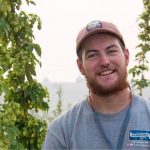
Aidan Kendall, MS: Resource conservation in cider apple production.
Awards
ASHS Extension Materials Award: Establishing a Cider Apple Orchard for Mechanized Management. Factsheet. Alexander, T., E. Scheenstra, J. King, S. Musacchi, and C. Miles. WSU Extension publication EM117E, 23p.
New Grant Projects
Establishing Camellia sinensis as a new crop for the Washington nursery industry. Washington State Department of Agriculture Nursery Research.

Vegetable Seed Pathology
Surveys for bacterial diseases of onion, and many field trials evaluating management practices were completed in 12 states as part of a $4 million USDA Specialty Crops Research Initiative project. Details of the project are available on the ‘Stop the Rot’ project website.
Research by PhD student, Kayla Spawton, verified the presence of two species of Stemphylium causing Stemphylium leaf spot of spinach. Isolates of the species predominant in southern states are resistant to the main group of fungicides growers have used to manage this disease, which explains why they have had increasing losses to the disease. Isolates of that species only cause disease on some spinach cultivars, which enables growers to manage the disease by selecting resistant cultivars.
Research by PhD student, Alex Batson, demonstrated there are two pathogenicity groups of the spinach Fusarium wilt pathogen, Fusarium oxysporum f. sp. spinaciae. The two groups can be distinguished genetically, and 68 commercial cultivars showed a differential reaction to the two groups of the fungus. This has important implications for growers selecting cultivars to plant, and for breeders developing cultivars with resistance to Fusarium wilt. Sanjaya Gyawali, Research Associate, identified excellent resistance to Fusarium wilt in wild spinach accessions collected from the center of origin of spinach.
Ryan Solemslie defended his MS thesis successfully in November.
Graduate Students

Alex Batson, PhD: The genetic basis of pathogenicity to spinach of Fusarium oxysporum f. sp. spinaciae.
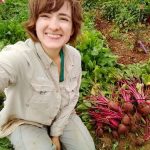
Stephanie Crane, MS in Ag: Management of Pseudomonas syringae pv. aptata in table beet and Swiss chard. Stephanie works full-time in the plant pathology program at Sakata Seed America in Mount Vernon.

Marilen Nampijja, PhD: Management of Pseudomonas syringae pv. aptata in table beet and Swiss chard seed production.

Ryan Solemslie, MS: Cold season emergence, vigor, and seedling blight resistance screening in sweet corn. Ryan defended his MS thesis in November 2020 and is interviewing for jobs in the seed industry.

Kayla Spawton, PhD: The ecology and management of Stemphylium leaf spot of spinach.
Awards
Alex Batson received the Storkan-Hanes-McCaslin Fellowship ($10,000) in support of his PhD research on Fusarium wilt of spinach.
New Grants
A systems approach for managing bacterial blight of carrot. USDA NIFA SCRI. Dung, J., du Toit, L.J., Greenway, G., Savory, E., Sidhu, J., and Stoll, R. $174,080 for du Toit of $2,999,366 from 2020-2023.
Screening carrot germplasm for resistance to cavity spot and bacterial blight. L.J. du Toit, P. Simon, and M.R. McDonald. CA Fresh Carrot Advisory Board. $22,950.
Etiology, biology, and management of Stemphylium leaf spot of spinach. L.J. du Toit and K. Spawton. Texas Wintergarden Spinach Producers’ Board. $19,464.

Vegetable Pathology
Isolates of Pseudomonas syringae that cause necrotic lesions and chlorosis on cucurbit leaf margins in early June and warts on fruit are likely due to a strain of Pseudomonas syringae that is closely related to P. syringae pv. aptata. This pathogen does not appear to infect fruit via systemic infections but rather due to external infections of the fruit rind. Work is continuing on the epidemiology to determine if weedy hosts such as chickweed, henbit, or annual grasses can serve as alternate hosts.
Black dot disease, caused by Colletotrichum coccodes, continues to be a significant priority for growers in the region. A recent project was developed to assess how early C. coccodes, will infect seed tubers after planting since this pathogen has been detected in plant tissues as early as 14 days pre-emergence. Early infections can reduce fungicide efficacy. Results of this previous year’s work show that seed pieces can be infected as early as three days post planting in a greenhouse setting. Work continues to evaluate the effects of an in-furrow applied vs. a one-time, drip-applied Quadris treatment on black dot on field-grown and screenhouse-grown plants.
The first year of a field trial to compare the efficacy of pre-plant incorporated Quadris or Trichoderma with drip-applied treatments on Botrytis cinerea infecting lettuce and strawberry was completed. Botrytis isolates were collected from both hosts to determine if populations occurring on strawberry are the same as those infecting lettuce, which can have implications for fungicide management when these crops are grown in close proximity.
Weed Science
We were certified as a ‘Good Laboratory Practices’ lab.
We determined the bicyclopyrone is an excellent post emergence herbicide providing season long weed control in broccoli and controlled all weeds after pre-emergence herbicides lost their effectiveness. The herbicide must be applied with a shielded sprayer to avoid crop injury. Chlorsulfuron was tested for impacts on horsetail (Equisetum arvense) and blueberry and raspberry crops.
IR-4 program tests: 11 horticultural species were tested for injury from herbicides, crops not susceptible to these herbicides may be added to the herbicide label. 2 pesticide residue studies were completed for table beets and blueberries. If residue tests are favorable, these crops may be added to the label.
Second year closely matched first year data to determine growing degree days for wild buckwheat and pale smartweed to produce viable seeds based on the number of leaves on the mainstem. A growing degree day model has been developed and will be validated summer of 2021. If funding is obtained, this model will become part of AgWeatherNet so that growers can time their control program with timing to prevent viable seed production.
We found that weed composition and weed biomass varied among 10 different autumn planted covers in the following spring. Generally, cover crops with more biomass had the greatest impact on weed biomass. Biochar, compost, and combinations of both were evaluated for impacts on weed control (no impact) and potato above and below ground yields.
Research in ongoing to determine what sites on Ross Lake in the Northern Cascades National Park are most susceptible to invasion by reed canarygrass.
NWREC Faculty Publications
NWREC faculty and their graduate students and research staff have been very productive regarding publications; since July 2020, we have published 15 journal articles, six technical publications and two newsletter articles.
July-December 2020
Alegea, F.P., G.J. Miitoa, L.W. DeVetter, H. Tao, and P.M. Ndegwa. 2020. Effects of blending dairy manure compost and canola meal on pellets quality and nutrient concentrations. Journal of Cleaner Production. doi: 10.13031/trans.14057
Batson, A.M., Fokkens, L., Rep, M., and du Toit, L.J. 2020. Putative effector genes distinguish two pathogenicity groups of Fusarium oxysporum f. sp. spinaciae. Molecular Plant Microbe Interactions 33: in press. https://doi.org/10.1094/MPMI-06-20-0145-R
Carmody, S.M., King, K.M., Ocamb, C.M., Fraaije, B.A., West, J.S., and du Toit, L.J. 2020. A phylogenetically distinct lineage of Pyrenopeziza brassicae associated with chlorotic leaf spot of Brassicaceae in North America. Plant Pathology 69:518-537.
Devi, P., S. Lukas, and C.A. Miles. 2020. Advances in watermelon grafting to increase efficiency and automation. Horticulturae 6(4):88. https://doi.org/10.3390/horticulturae6040088 .
Devi, P., P. Perkins-Veazie, and C.A. Miles. 2020. Rootstock and plastic mulch effect on watermelon flowering and fruit maturity in a Verticillium dahliae infested field. HortScience (aop):1-8. https://doi.org/10.21273/HORTSCI15134-20.
Devi, P., S. Lukas and C. Miles. 2020. Fruit maturity and quality of splice-grafted and one-cotyledon grafted watermelon. HortScience 55:1090-1098. https://doi.org/10.21273/HORTSCI15045-20.
du Toit, L.J., Brouwer, L.R., Derie, M.L., Henrichs, B.A., Holmes, B.J., and Waters, T.D. 2020. The effect of formulation and application method of commercial arbuscular mycorrhizal fungi inoculants on onion seedlings in a growth chamber study, 2016. Plant Disease Management Reports 14:V059.
du Toit, L., and Derie, M. 2020. Spot-on research. Establishing a carrot cavity spot nursery at Washington State University. Carrot Country, Spring 2020:4-9.
du Toit, L.J., Derie, M.L., and Holmes, B.J. 2020. Efficacy of prothioconazole for management of black leg and light leaf spot in annual and biennial brassica seed crops, and in a greenhouse cabbage trial in Washington State, 2016-17. Plant Disease Management Reports 14:V055.
du Toit, L.J., Derie, M.L., Holmes, B.J., Miller, C.E., Brouwer, L.R., Waters, T.D., and Darner, J. 2020. Effects of three arbuscular mycorrhizal fungi inoculants on pink root and yield in a commercial onion bulb crop near Othello, WA, 2017. Plant Disease Management Reports 14:V061.
du Toit, L.J., Derie, M.L., Holmes, B.J., Miller, C.E., Morgan, P., Brouwer, L.R., Waters, T.D., and Darner, J. 2020. Effects of Mykos Gold Granular, an arbuscular mycorrhizal fungi inoculant, on pink root, white rot, and crop growth in spring- and fall-planted sweet onion crops near Walla Walla, WA, 2017-2018. Plant Disease Management Reports 14:V060.
du Toit, L.J., Derie, M.L., Holmes, B.J., Winkler, L.R., Waters, T.D., and Darner, J. 2020. Effects of an arbuscular mycorrhizal fungal inoculant and a mycorrhizal stimulant on pink root and productivity of dehydration onion crops near Paterson, WA, 2016. Plant Disease Management Reports 14:V062
du Toit, L.J., Waters, T., Derie, M., and Darner, J. 2020. Battling onion bacterial diseases with bactericides. Onion World, Dec. 2020:6-11.
LaHue, G.T. and Linquist, B.A., 2021. The contribution of percolation to water balances in water-seeded rice systems. Agricultural Water Management, 243, p.106445.
Miles, C.A., T.A. Alexander, G. Peck, S.P. Galinato, C. Gottschalk and S. van Nocker. 2020. Growing apples for hard cider production in the U.S. – trends and research opportunities. HortTechnology 30:148-155. https://doi.org/10.21273/HORTTECH04488-19.
Paulitz, T., Schroeder, K., Porter, L., Chen, W., and du Toit, L. 2020. Pythium seed and seedling rot. Pp. 23-26 in: Compendium of Pea Diseases and Pests, 3rd Edition. American Phytopathological Society, St. Paul, MN.
Paulitz, T., Sharma-Poudyal, D., Schroeder, K., Porter, L., Pasche, J., and du Toit, L. 2020. Rhizoctonia seed and seedling rot. Pp. 26-29 in: Compendium of Pea Diseases and Pests, 2nd Edition. American Phytopathological Society, St. Paul, MN.
Sintim, H.Y., Bandopadhyay, S., English, M.E., Bary, A.I., Liquet y González, J.E., DeBruyn, J.M., Schaeffer, S.M., Miles, C.A., Flury, M. 2020. Four Years of continuous use of soil-biodegradable plastic mulch: impact on soil and groundwater quality. Geoderma 381: 114665 https://doi.org/10.1016/j.geoderma.2020.114665.
Smith, O.M., B. Gerdeman, M. Arrington, H. Spitler, and L.W. DeVetter. 2020. Pollination, arthropod and bird communities, and crop productivity are marginally impacted by border vegetation in highbush blueberry production. HortTechnology. In press.
Zhang, H., C. Miles, M. Flury, H. Liu, and L.W. DeVetter. 2020. Soil-biodegradable plastic mulches undergo minimal in-soil degradation in a perennial raspberry system after 18 months. Horticulturae 6(3):47. https://doi.org/10.3390/horticulturae6030047.
Zhang, H., L. DeVetter, E. Scheenstra, and C. Miles. 2020. Weed pressure, yield, and adhesion of soil-biodegradable mulches with pie pumpkin (Cucurbita pepo). HortScience 57:1014-1021. https://doi.org/10.21273/HORTSCI15017-20.
Zhang, H., C. Miles, S. Ghimire, C. Benedict, I. Zasada, H. Liu, and L.W. DeVetter. 2020. Plastic mulches improved plant growth and suppressed weeds in late summer-planted floricane-fruiting raspberry. HortScience 55:565–572. https://doi.org/10.21273/HORTSCI14734-19.
Rustgi, S., B. Brouwer, D. von Wettstein, P.E. Reisenauer, S. Lyon, N. Ankrah, S. Jones, S.O. Guy, X. Chen. 2020. Registration of ‘Fritz’, a two-row spring barley. J. Plant Registrations, 14(3).
Educational Events
Lunch and Learn Seminars
The Lunch & Learn seminar series organized by Dr. Deirdre Griffin LaHue and Dr. Lydia Tymon this Fall and delivered through Zoom provided our agricultural community an opportunity to attain WSDA Pesticide Credits. The virtual delivery was important as many in-person education opportunities were cancelled. Over the 11-week series, 131 WSDA Pesticide Recertification Credits were earned by 43 individuals. Presentations highlighted the work of NWREC researchers as well as leading practitioners from around the PNW on topics ranging from Wireworm Identification and Management to Making the Most of your Organic and Conventional Fungicide Program to Know Your Herbicides: Clopyralid and aminopyralid. Recordings of presentations are available on our YouTube channel. Stay tuned for another seminar series in Spring 2021! And let us know if there is a particular topic you would like us to include.
Cider Classes
Fall Classes
In collaboration with the Cider Institute of North America (CINA) and university partners at Cornell and Brock Universities, we have successfully launched an online version of the Cider & Perry Production – A Foundation class. This class, which has been offered twice since late June, has attracted new cider professionals resulting in sold-out classes. A total of 75 participants from the U.S., Canada, and other international locations have participated in the class, and taken their first step on their CINA certification path. Hands-on learning has been supplemented with course kits sent through the mail, and participants gain extra perspectives through the university partnerships and a series of guest speakers from the leaders in the industry. These classes fill fast, and we look forward to more opportunities to engage with cider entrepreneurs in this virtual environment.
Upcoming Classes
Another round of online classes starts in February 2021—there are only 12 tickets remaining, so be sure to register early to secure your spot. We also currently have an in-person class scheduled for the week of March 22, 2021 at the NWREC, but our ability to offer that course is dependent on the current public health crisis. If we are unable to hold our in-person course, we will work to reschedule the course at the next opportunity.

NWREC Campus Remains Closed to the Public
As an essential part of the agriculture industry in Washington State, Northwestern Washington Research and Extension Center faculty, staff and students remain on the job; we are continuing to carry out our office work at home and spending time in our research labs and field plots on a reduced basis. While Skagit County continues to work towards resuming commercial activity, we will continue to serve the state through research and Extension activities in keeping with guidance from Governor Inslee and University administration. NWREC will remain closed to the public due to COVID-19. We look forward to sharing our research updates with you via online seminars and newsletter reports.
